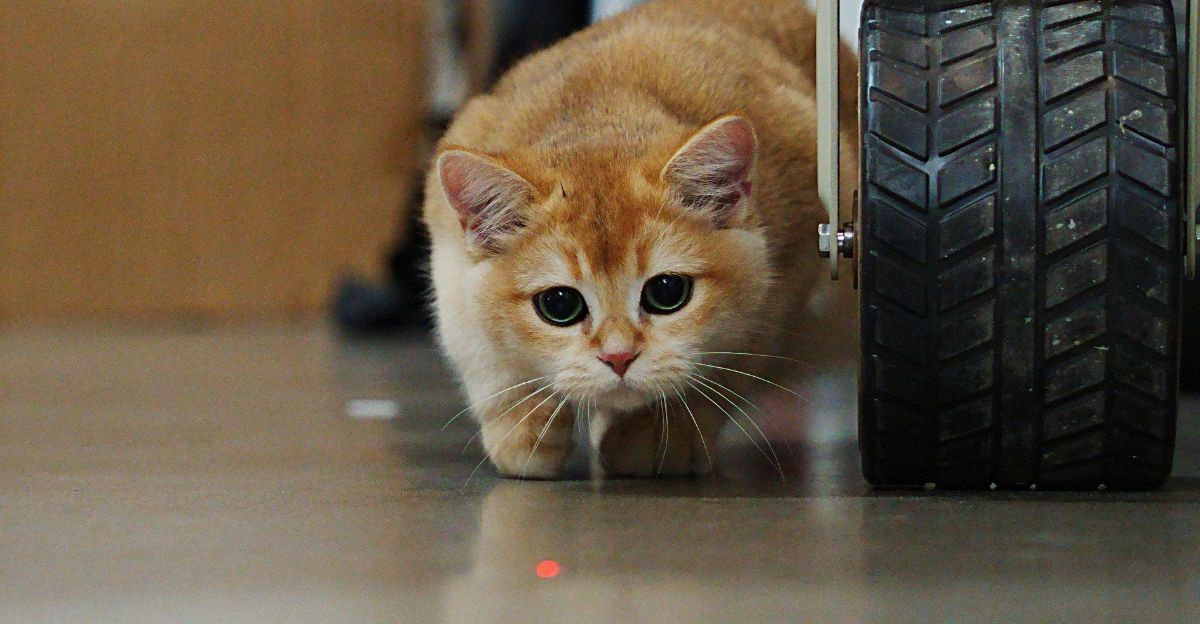Are Laser Pointers Bad for Cats? The Truth About a Popular Toy

If you've ever pointed a red dot across the room and watched your cat pounce like a jungle predator, you’re not alone. Laser pointers are a go-to toy for many cat parents—they're convenient, fun, and incredibly entertaining to watch. But have you ever stopped to wonder: Are laser pointers bad for cats?
It’s a great question, and the answer isn’t as simple as yes or no. Let's dive into the debate, explore what the experts say, and—most importantly—figure out how to keep your feline friend mentally stimulated, safe, and satisfied.
The Fun—and the Flaws—of Laser Pointer Play
Laser pointers appeal to cats for one main reason: they mimic prey. That erratic red dot? It taps into your cat’s deep hunting instincts. The chase is thrilling—but what happens when the hunt never ends in a catch?
That’s where things get tricky.
Why Are Laser Pointers Bad for Cats? (Sometimes)
1. Frustration Without a Catch
One major concern with laser pointer play is psychological frustration. Cats are wired to stalk, chase, and ultimately catch their prey. A red dot? It’s endlessly fast—and completely intangible.
This can lead to:
● Obsessive chasing of lights and shadows
● Fixation on reflective surfaces
● Anxiety or abnormal repetitive behaviors (ARBs)
Studies have linked frequent laser pointer use with compulsive behaviors, particularly in indoor-only cats and young cats between 1–2 years old. While the evidence doesn’t prove that laser toys cause these behaviors, it does suggest a strong correlation. It’s something every cat owner should watch for.
2. Physical Eye Risks
Another common question: Can laser pointers hurt a cat’s eyes? Yes, they can—especially if misused. While most laser pointers designed for pets are low-powered (1–5 milliwatts), direct exposure to the eyes can still cause damage. Reflective surfaces can worsen the risk, bouncing the beam into a cat’s face unexpectedly.
Automatic laser toys pose even more danger, as they may shine into your cat’s eyes unsupervised. For safety’s sake, always be present during laser play.
How to Use Laser Pointers the Right Way
Laser toys aren’t inherently bad. In fact, when used properly, they can be a great tool for enrichment activities for cats. The key? Make sure your play sessions respect your cat’s instincts and needs.
Here’s how to do it right:
✅ End the Hunt with a Real Reward
A simple solution to the “unfulfilled prey drive” is to let your cat “catch” something at the end. Direct the dot onto a treat, feather toy, or plush mouse. Let them pounce and chew. This brings emotional closure and reduces frustration.
✅ Keep Laser Play Short and Sweet
Aim for 5–10 minute sessions. Overlong play can lead to overstimulation or obsession. Think of it as a quick cardio burst, not a marathon.
✅ Protect Their Eyes
Never point the laser directly at your cat’s face or near reflective surfaces. Safety first.
✅ Watch for Red Flags
If your cat starts staring at lights, chasing shadows obsessively, or seems unusually anxious after laser play, take a break. Not all cats react the same way, and it’s crucial to monitor their individual responses.
Better Together: Combine Laser Toys with Other Forms of Enrichment
Even with the best precautions, laser pointers shouldn’t be your cat’s only toy. Diversifying your cat’s playtime helps prevent boredom and keeps their brain sharp. So, what are some fun, safe alternatives?
🧠 Mental Stimulation for Cats
1. Puzzle Feeders – These combine mealtime with problem-solving. Great for slowing down fast eaters too.
2. Treat Balls – Roll them around and let your cat figure out how to get the goodies out.
3. Interactive Toys – Toys that chirp, wobble, or hide surprises are perfect for curious minds.
🎣 Physical Play Alternatives
1. Wand Toys – These simulate prey in a more tangible way, and you’re in full control of the movement.
2. Cat Tunnels and Climbers – Encourage exploration and give indoor cats a way to burn energy.
3. Kick Toys – These satisfy the urge to bite and bunny-kick during solo play.
The goal is to offer enrichment activities for cats that mimic the complete hunting cycle: stalk, chase, catch, and devour. That’s the secret sauce to a happy, healthy feline.
Not All Cats Are the Same
One final reminder: every cat is different.
Some cats love laser pointers and show no negative effects. Others become agitated or develop obsessive behaviors. It’s your job as a pet parent to pay attention to their body language and behavior.
If you ever notice signs of stress or fixation, swap the laser out for more tactile toys and observe if things improve. When in doubt, consult your vet or a feline behaviorist.
Final Thoughts: A Balanced Approach to Laser Play
So, are laser pointers bad for cats?
Not necessarily—but they’re not a perfect toy either. Like many tools, they’re only as good as how you use them. With mindfulness and moderation, laser pointers can be a fun addition to your cat’s play routine.
Just remember:
● Always offer a “catch” at the end
● Avoid eye exposure
● Keep sessions short
● Balance with other enrichment activities
Your cat’s well-being depends on more than just toys—it’s about engaging their instincts, offering mental stimulation, and showing consistent care.
Want to give your cat the best of both worlds? Use the laser for the chase, and a feather toy for the catch. Now that’s a game your cat can truly win.


